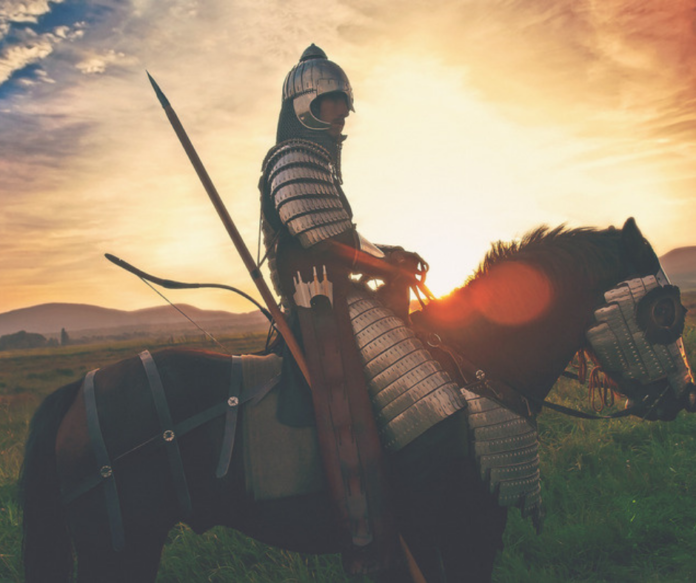“It was six in the morning in pre-monsoon Bengal of 1757; an English military Colonel woke up in his modest bedding in a small hunting lodge in a remote village on banks of the river Hooghly. The Colonel was fatigued of his long march from Calcutta, accompanying him was his army of 750 English soldiers and 2100 native sepoys. With this humble force, this general aspired to make a gamble, a gamble of not ordinary measure, but one which was going to change fates of Two Countries namely- Britain and India. The name of this British Colonel was – Major-General Lord Robert Clive.”
Bengal of the 18th Century was the most prosperous province, not only of India but of the entire world. It is said the Jagat Seths, the chief bankers of Nawabs of Bengal had more wealth in their exchequer than all money in the treasury of all Banks of England put together. The Per capita income of Murshidabad (the capital of Bengal) was more than that of Madrid and Lisbon (the most prosperous European cities). Bengal was ruled by its Nawabs, Emperor Aurangzeb appointed Murshid Quli Khan as Diwan of Bengal in 1707, he went to become Subahdar of the province and set up his Nizamat. The Nawabs always kept themselves away from every kind of conflict for squabbling of power taking place in the heartland of the country and focused on trade and development of their province, the reason for the prosperity of Bengal was its neutrality throughout the tempestuous 17th and Early 18th centuries.
At the time when Bengal was epitomizing its success, A small corporate company from an unpromising obscure land far away harboured its first ship ‘Hector’ on the port of Surat in 1600; soon after this Company received a ‘Shahi Firman’ (Royal Charter) from Mughal Emperor Jahangir and started its operations in India in the name of “East India Company”. Within a very short period, this Trading Company started spreading its tentacles throughout the subcontinent. With their trade in jewels, pepper, textile, and saltpetre the balance sheets of EIC plummeted and by 1617, the joint-stock subscription of this company reached a colossal figure of 1.6 million pounds (168 million pounds in modern times). In 1629 EIC built its first settlement on the coast of Coramandel, called Madras. Bombay came to them as a dowry in 1661. But it was not before 1690, when a young Company factor named Job Charnock, bought three villages from a native landlord, the company got their most important and valuable stronghold, Calcutta.
Though the EIC was superior to any Indian tradesmen, its power didn’t go unchallenged as “Compagnie Francaise des Indes” commonly known as French East India Company had the same motive as their English counterpart. These two nations had always been at each other necks throughout the world, India was no exception. Whenever these two countries faced each other on the Battlefield the effect was felt wherever these two had presence. It was in 1756 during the Seven Years War, a confidential report was received by the governor of Calcutta from London via Madras, it said that a very strong French flotilla has sailed from the ports of Brittany and all the indications imply that this Armada is bound for Calcutta. This fell like a thunderbolt on the poor Governor Roger Drake, who hastily gave orders of enlarging and manning the Fortifications of Fort William. He was completely unaware that the cause of the imminent destruction of Calcutta was not going to be Versailles but a town only 143 miles north of it.
Problems were brewing in Murshidabad, where Nawab Alivardi Khan, 80-years old, was gravely ailing. The Nawab during his reign maintained an amicable relationship with the British but also didn’t bow down to their monopoly of trade. He provide equal opportunities to Foreign and local business firms and was much respected in the whole Province. The administration was stable, things started to tumble only when he named his Heir.
Siraj-ud-Daulah, perhaps one of the most agathokakological characters of Indian history, succeeded his beloved Grandfather on 10th April 1756.
Siraj-ud-Daulah, was only 22-years old when he acceded to the throne of Murshidabad, a throne with thousand pricks. Siraj was not highly regarded in the court, ministers despised his short-temperateness and hot-blooded temper. He was only going to prove them right. When the English were busy strengthening the defenses of Calcutta, they were sent a Notice, that if they in any way proceeded their activities and exceeded the fortification of Fort William, it will not be well received by the Nawab. Unmindful of the consequences Mr.Drake didn’t bother to even acknowledge the notice. As a result, the newly acceded Nawab took the thing in his hand and sought to teach these Englishmen a lesson not to be forgotten.
Siraj-ud-Daulah marched down his army onto Calcutta, the unprepared British were heavily outnumbered and were no match against the unparalleled army of the Nawab, which was commanded by his old & trusted Commander-in-Chief, Mir Jafar. Most residents ran away and fled the city to save their lives, but all were not that fortunate. The remaining European population were apprehended and were gutted in a Dungeon, only a few survived of a once the most promising and thriving city of India.
When reports of this catastrophe reached Madras, every British soldier trembled and wanted only Vengeance. Robert Clive immediately sailed for Calcutta with 900 Europeans and 1500 sepoys. On 15th December they met with the British fugitives and by 2nd January 1757, he re-captured Calcutta. But Clive’s mission didn’t end here, he wanted reparation for all British losses, and for that, he could go to any extent.
Clive was aware of the dissatisfaction amongst Nawab’s subject, his sole aim was to reach at a parley with the anti-incumbent wing of Murshidabad. He was right, a serious conspiracy was brewing in Murshidabad where most, if not every eminent figure of the court was part of the conspiracy. The members of this conspiracy included Nawab’s aunt Ghaseti Begum, chief bankers Jagat Seth, military chiefs like Rai Durlabh and Lutuf Khan, and his commander-in-chief Mir Jafar. Clive just aligned himself with this lot, and these handful but important people mainly driven by avarice and greed for power were going to change the course of history as we see it today.
On 13th June 1757, Clive Formally sent an ultimatum to Siraj, and began the Historic march, in the drenching tropical heat of the Bengali summer. He passed through a great planisphere of green floodplains and abundant paddy field, filled with the joyous screeching of birds, a land amply supplied through all resources. On red muddy roads alongside the famous Bauls, marched the Red-Coats. Clive was ardently corresponding with Mir Jafar but was not receiving any reliable reply. Only when they reached near the famous mango orchards near a place called Plassey, known for its field full of Palash flowers, Clive received an ambiguous note from his ally Mir Jafar, “I will join you at Plassey”
The next Morning Clive woke up in a small hunting lodge where they had encamped for the night. He went on the roof of the lodge, what he saw from there took him aback. The complete Imperial Army of Bengal 35,000 Infantry and 15,000 Cavalry arrayed in battle formation, in the middle seated on his palanquin was Nawab Siraj-ud-Daulah Himself, along with his standards fluttering high in the blue sky, amongst those flags Clive spotted a familiar one, it was the French Flag. A fellow officer came and said to Clive in his ears “Sir, let’s sling our rifle on our backs and quietly slip away to Calcutta.” But Clive had other plans.
At 8 am the cannonade started, the French guns fired briskly at the English artillery unit, the English were nearly surrounded and couldn’t stand at the firepower of the opponent. After losing 30 sepoys, Clive tucked in his shelter with other British officers, ordered to withdraw. At this point, it seemed the Nawab would win only by his artillery power. But the British probably had God as their ally too, by the noon sky started to darken, it rained, within 10 minutes of the downpour the gunpowder in the Nawab’s arsenal soaked.
Thinking that the situation might be the same at the opponent’s side too, Mir Madan, commander of a Cavalry unit, prepared to strike. With 5,000 Afghan Horsemen, he led the charge. British gunpowder was saved as they had covered it with tarpaulin. And when saw Mir Madan’s men coming, they commenced such an incessant rain of bullets, such a hot-endless firing, even the spectators were astounded. Most of the men in the charge were killed, including the Flower of Bengal Army, Mir Madan.
Nawab Siraj-ud-Daulah thought the rest of his army would follow Mir Madan and break the British line, and triumph. But what he saw, he couldn’t comprehend, all his commander stood immobile, impassive and uninterested in doing anything, seeing the fall of Mir Madan, there was chaos in the army, soldiers started to abandon their position, understanding the gravity of the situation, Nawab Siraj-ud-Daulah left his palanquin and started running and fled the battlefield.
The battle was thus won, by the British, who sustained only 20-30 causalities against the 500-1000 men killed of the Nawab’s contingent. Just after the trumpets started in the British quarters. Mir Jafar went to Clive, and as a formality, surrendered his forces to Clive.
This was the story of The Battle of Plassey, as an aftermath of this battle provided the foundation for the “Company Raj’’ which enslaved India for the next 100 years and like a parasite sucked every ounce of the wealth of this prosperous and flourishing Nation. After Bengal, province after province fell into Company’s hands. With the battle of Buxar in 1763, The Nizamat of Bengal completely ended. Droughts became common in the province, which claimed the lives of millions, but the company was unaffected by anything carried on its operations as usual and focused on its corporate interest. Later on, the 18th century witnessed the fall of every Indian power From Marathas in west to Jats and Sikhs in the north, to Nizams and Tipu Sultan in the south all are tamed by the new Ring-Master, The British.
The Company was finally replaced by the Crown, following the mutiny of 1857. British Raj by Her Majesties Government carried on the atrocities on Indians, and India had to wait another 90 years. In 1947, with India’s Independence, this poor nation got an opportunity to reverse all that it had endured in the last 200 years. People say if the outcome of the battle of Plassey had been different India had never to seen these days.
Today Siraj-ud-Daulah is considered a National Hero, whereas Mir Jafar’s name is synonymous with Treachery.










